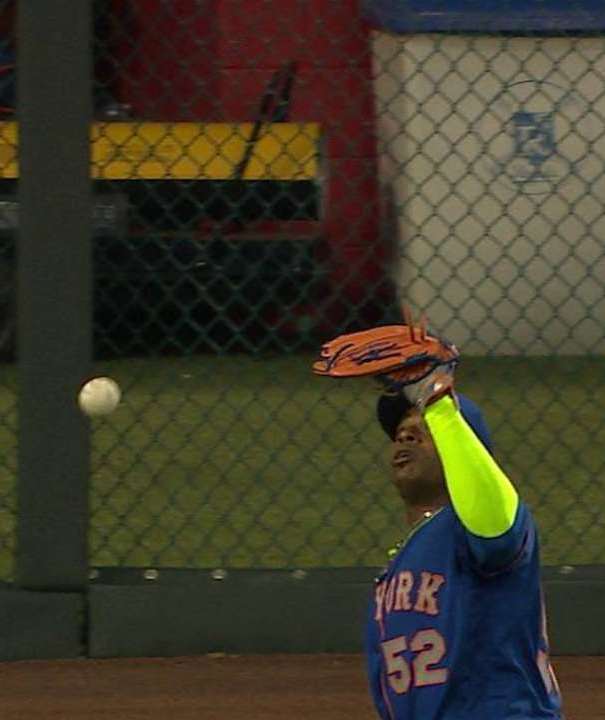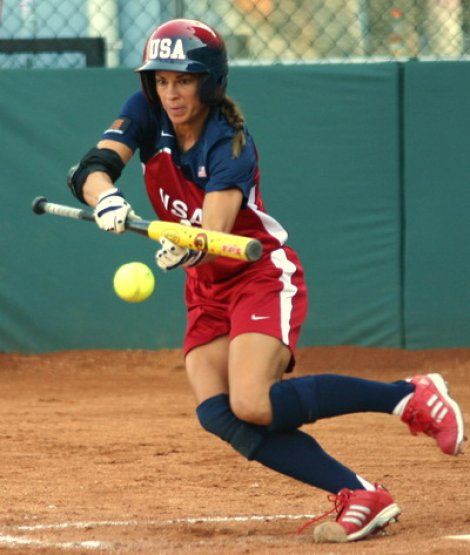|
As soon as the ball clanged out of Yoenis Céspedes’ glove, I texted another Met fan: “I’m sick of Cespedes.”
The $27.5-million man (just this season) loafed after an easy out to left field, not wanting to expend too much energy in the first inning of opening day. It must be nice to be that cool. Fortunately, somebody in the booth was ready to call it for the attitude error that it was: Jessica Mendoza, who has become an essential part of ESPN broadcasts. “I’m an outfielder,” she said, not needing to mention she was a star on the USA 2004 Olympic champion softball team in Athens. Mendoza said it made her mad to watch outfielders drift toward a ball without bothering to catch up with it and protect themselves by raising their bare hand as insurance. She was old-school. Purist. And absolutely right. Both Céspedes and Mendoza were picking up where they left off last season – he with his maddening nonchalance, she with her player-and-fan knowledge of the game, particularly hitting mechanics. Mendoza leaped into public awareness last season when Curt Schilling made yet another stupid comment and was off the air. She fit seamlessly and has been paired with Dan Shulman and Aaron Boone, the third-generation major-leaguer, who treats her with collegial respect, calling her “Jess” and asking her opinion. There is none of that clubhouse male buffoonery that mars most MLB-NFL-NBA network broadcasts. Generally, I am not amused when network coverage intrudes on the Mets and Yankees, preferring to get heightened insights from people who cover the club regularly rather than get filled in the morning of the broadcast. I was mad that Gary and Keith and Ron were not available to me Sunday night. But Shulman and Boone and Mendoza did not posture and bluster. I am not surprised about Mendoza, who gave me a terrific interview in 2004 in Athens just before the Games began, when softball was facing its eventual and unfair exclusion. She provided a thoughtful glimpse of the athletes’ village and talked about her own sport. I found the link here: http://www.nytimes.com/2004/08/04/sports/sports-of-the-times-some-athletes-are-thrilled-to-compete-at-the-games.html We in New York have had another female broadcaster – Suzyn Waldman, the long-time Yankee radio color announcer, working the clubhouse and paying attention to the game as complement to John Sterling’s shtick. Waldman and Mendoza know the game. On my own, I figured out that David Wright (with his bad back) looked shaky at third and facing fastballs. And I could see how the Mets had upgraded defensively with Asdrubal Cábrera at short and Neil Walker at second. That will save a game or three. No more cringing every time a ball goes near Daniel Murphy. Now I cringe when a ball goes near Céspedes in left field. It’s a new baseball season. Life begins. 4/4/2016 02:02:22 pm
Indeed, life begins anew, George, even with the snow presently falling over New England. Agree with your Cespedes and Mendoza observations. And I worry, too, about David Wright. He did not look comfortable out there, especially at the plate. It's like his body cannot keep up with his competitive spirit any more. I sincerely hope I'm wrong about this, but there was just something in his eyes after that 9th inning whiff. I did not see the usual DW boyish grit. Play ball.
George Vecsey
4/5/2016 08:36:44 am
Peter, I agree, although we both know it's dangerous to read deep meaning into one game or a few facial tics. Still,we and Wright know the deal....and baseball is a game of finely-tuned movements and split seconds i.e. Hosmer's Dash.
bruce
4/4/2016 11:15:33 pm
George,
George Vecsey
4/5/2016 08:45:01 am
Bruce, thanks. Shulman is smooth, no shticks, referred to being at the Jays' first game. Never knew he was from Toronto. Usually I can hear the "oot" -- like in Alan Thicke, doing those US income-tax commercials.
bruce
4/5/2016 09:08:02 am
george,
Roy Edelsack
4/5/2016 03:24:03 pm
Baseball irony. This is Vin Scully's last year broadcasting Dodgers games but a large portion of the Los Angeles area won't get to see him due to a cableTV dispute that just entered its second year. Meanwhile, as an MLB Premium subscriber, I get all of the Dodger games here in New Jersey but I don't get Yankees games as I'm a Comcast subscriber whose provider is currently in a dispute with the YES network. So Los Angeles can't watch the Dodgers (but can watch the Yankees) and New Jersey can't watch the Yankees (but can watch the Dodgers).
George Vecsey
4/5/2016 06:57:46 pm
That's baseball...that's economics.
bruce
4/5/2016 08:50:04 pm
george,
George Vecsey
4/6/2016 08:17:39 am
Bruce, my late friend and mentor, Stan Isaacs of Newsday, wrote a column titled "Out of Left Field," which explained his politics and personality.
bruce
4/6/2016 08:33:32 am
george,
George Vecsey
4/6/2016 09:08:46 am
Peter Ueberroth, as commissioner, told them what they needed to do. His position was, who told the dopes to talk about it?
bruce
4/6/2016 09:17:43 am
george,
George Vecsey
4/6/2016 12:23:51 pm
I never worry about players making too much money.
bruce
4/6/2016 12:39:05 pm
George, 4/6/2016 03:57:54 pm
An excellent book on how the owners manipulate the players is “Dollar Sign on the Muscle: The World of Baseball” by David Kerrane.
George Vecsey
4/6/2016 08:05:26 pm
Alan, several old Brooklyn Dodgers said Rickey would leave a copy of Jackie Robinson's contract loose on his desk, when they came in to talk salary. As one player told me, "I figured, 'Geez, Jackie only makes $XX,XXX?' How can I ask for more?" Comments are closed.
|
Categories
All
|











